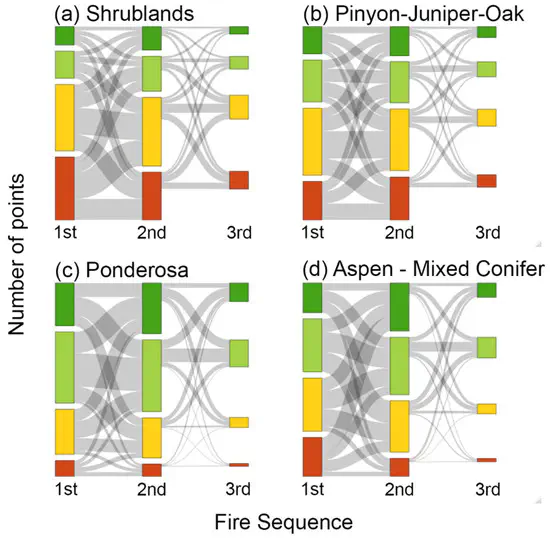Fire Severity in Reburns Depends on Vegetation Type in Arizona and New Mexico, U.S.A.
 Image credit: Larissa Yocom
Image credit: Larissa YocomAbstract
After more than a century of low fire activity in the western United States, wildfires are now becoming more common. Reburns, which are areas burned in two or more fires, are also increasing. How fires interact over time is of interest ecologically as well as for management. Wildfires may act as fuel treatments, reducing subsequent fire severity, or they may increase subsequent fire severity by leaving high fuel loads behind. Our goal was to assess whether previous wildfire severity influenced subsequent fire severity across vegetation types and over time in the Southwest U.S. using remotely sensed fire severity data in 2275 fires that burned between 1984 and 2019. Points that reburned tended to be those that burned with lower severity initially. Shrublands burned predominantly at moderate to high severity in initial fires and in reburns. Pinyon-juniper-oak systems burned with mixed severity, and fire severity was consistent from fire to fire. In ponderosa pine and aspen-mixed conifer, fire severity tended to decrease with each fire. Initial and subsequent fire severity was lower in points that reburned after a short interval. These remotely sensed observations of reburn severity need verification through field work to understand specific effects caused by reburns in different ecosystems. However, in ponderosa pine and aspen-mixed conifer forests, it may be beneficial to consider wildfires as fuel treatments and work to maintain the fuel reduction effects they have on forested ecosystems.